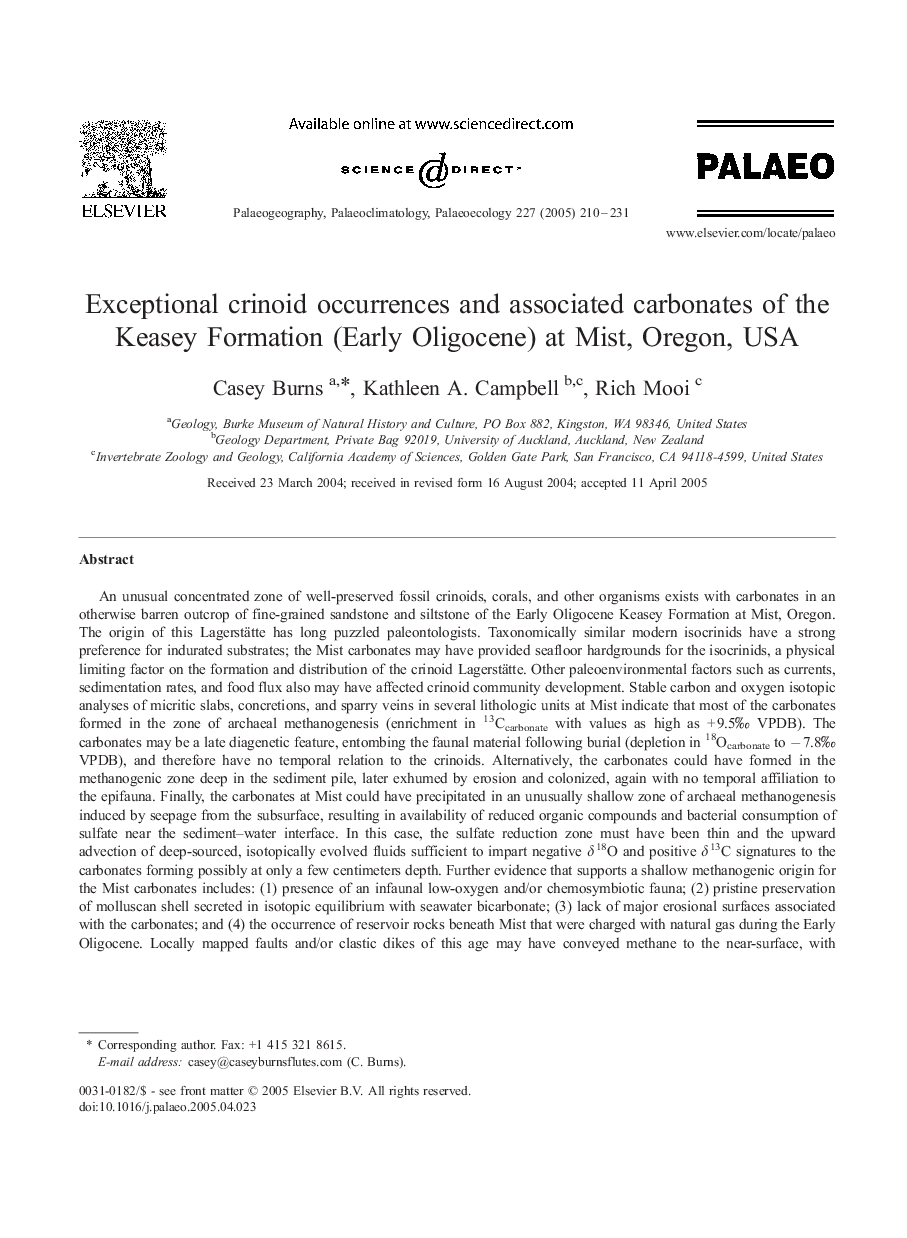| Article ID | Journal | Published Year | Pages | File Type |
|---|---|---|---|---|
| 9462999 | Palaeogeography, Palaeoclimatology, Palaeoecology | 2005 | 22 Pages |
Abstract
An unusual concentrated zone of well-preserved fossil crinoids, corals, and other organisms exists with carbonates in an otherwise barren outcrop of fine-grained sandstone and siltstone of the Early Oligocene Keasey Formation at Mist, Oregon. The origin of this Lagerstätte has long puzzled paleontologists. Taxonomically similar modern isocrinids have a strong preference for indurated substrates; the Mist carbonates may have provided seafloor hardgrounds for the isocrinids, a physical limiting factor on the formation and distribution of the crinoid Lagerstätte. Other paleoenvironmental factors such as currents, sedimentation rates, and food flux also may have affected crinoid community development. Stable carbon and oxygen isotopic analyses of micritic slabs, concretions, and sparry veins in several lithologic units at Mist indicate that most of the carbonates formed in the zone of archaeal methanogenesis (enrichment in 13Ccarbonate with values as high as + 9.5â° VPDB). The carbonates may be a late diagenetic feature, entombing the faunal material following burial (depletion in 18Ocarbonate to â 7.8â° VPDB), and therefore have no temporal relation to the crinoids. Alternatively, the carbonates could have formed in the methanogenic zone deep in the sediment pile, later exhumed by erosion and colonized, again with no temporal affiliation to the epifauna. Finally, the carbonates at Mist could have precipitated in an unusually shallow zone of archaeal methanogenesis induced by seepage from the subsurface, resulting in availability of reduced organic compounds and bacterial consumption of sulfate near the sediment-water interface. In this case, the sulfate reduction zone must have been thin and the upward advection of deep-sourced, isotopically evolved fluids sufficient to impart negative δ18O and positive δ13C signatures to the carbonates forming possibly at only a few centimeters depth. Further evidence that supports a shallow methanogenic origin for the Mist carbonates includes: (1) presence of an infaunal low-oxygen and/or chemosymbiotic fauna; (2) pristine preservation of molluscan shell secreted in isotopic equilibrium with seawater bicarbonate; (3) lack of major erosional surfaces associated with the carbonates; and (4) the occurrence of reservoir rocks beneath Mist that were charged with natural gas during the Early Oligocene. Locally mapped faults and/or clastic dikes of this age may have conveyed methane to the near-surface, with crinoid growth occurring upon indurated, calcareous sediments that were intermittently exposed by minor current winnowing of the draping bottom silts.
Related Topics
Physical Sciences and Engineering
Earth and Planetary Sciences
Earth-Surface Processes
Authors
Casey Burns, Kathleen A. Campbell, Rich Mooi,
